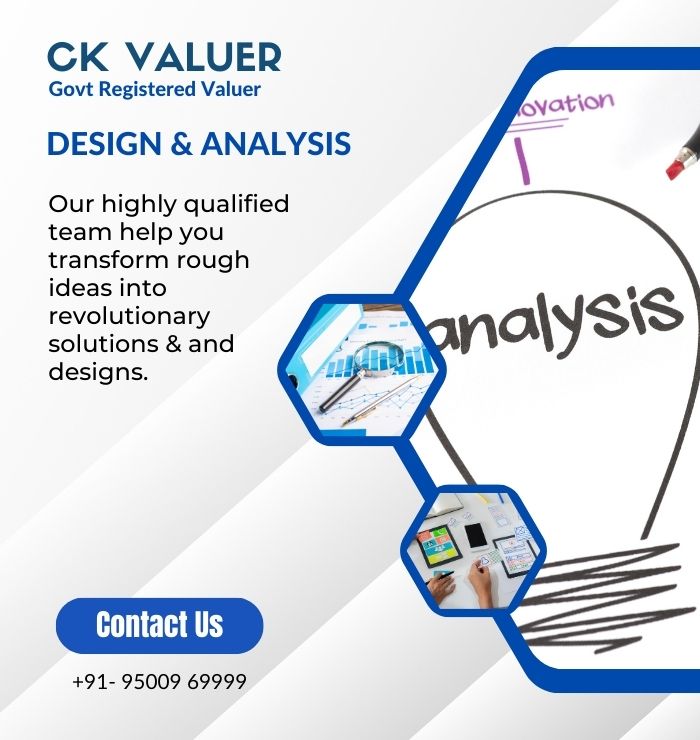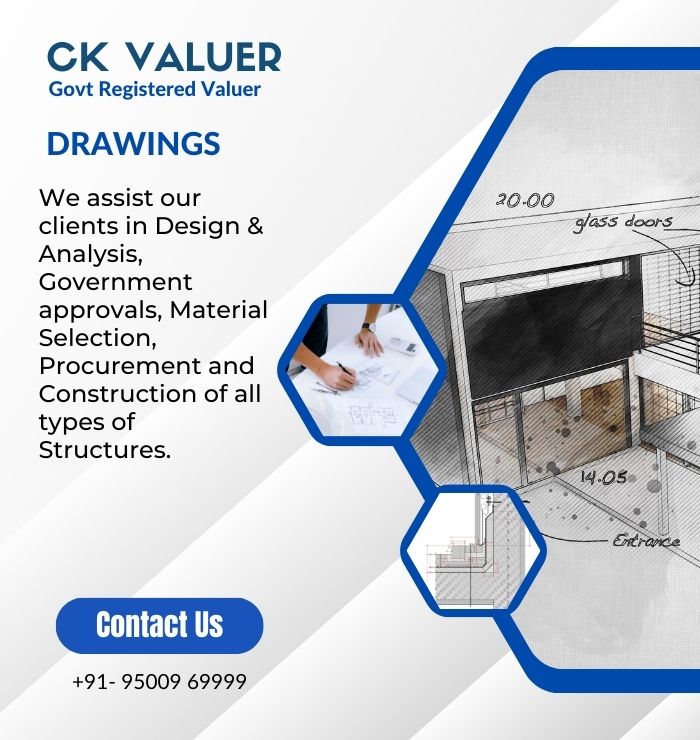Get structural design and Analysis Services
CK Valuer – Er.B.Chandrakanth, Govt Registered Valuer | structural design and Analysis Services
As a professional turnkey contractor and engineering company with 25 years of experience, we understand the importance of the BIS Code & Industry standard requirements. We always adhere to and implement the projects stringently. Our highly qualified team helps you transform rough ideas into revolutionary solutions & designs. We assist our clients in Design & Analysis, Government approvals, Material Selection, Procurement, and Construction of all types of Structures.
Design & Analysis
- Foundation Design
- Retaining Wall Design
- RCC Framed Structure Design
- Multi-Storey Building Design
- Individual House Design
- Load Bearing Structure Design
- Interior Design
- Structural Steel Design
- Warehouse / PEB Buildings
- Pipe-racks, etc.

No Project is too complex. No Project is too Small

DRAWINGS
- Conceptual Sketches
- Preliminary Drawings
- Site Layout / Plans
- Architectural Drawings
- Detailed Floor Plan Drawings
- RCC / Rebar Drawings
- Structural Steel Drawings
- DTCP Approval Drawings
- Electrical Drawings
- Plumping Drawings, etc.
3000+
Infrastructure Appraisals and Valuations
15+
Professionals
2+
Branches
FAQ for Structural Design and Analysis
Structural design and analysis is the engineering art of ensuring a structure’s safety and functionality under various loads. Imagine sculpting a building or bridge that stands strong yet graceful – that’s the essence!
- The structural analysis and design procedure follows a five-step journey: Modeling: Create a digital replica of the structure.
- Load analysis: Identify and calculate all forces acting on the structure.
- Structural analysis: Evaluate how the structure reacts to these forces using tools like Finite Element Method (FEM).
- Structural design: Select materials, shapes, and sizes based on analysis results.
- Detailing: Provide precise drawings for construction.
Types of structural analysis include:
- Static analysis: Assesses behavior under constant loads (buildings).
- Dynamic analysis: Examines response to time-varying loads (earthquakes, wind).
- Nonlinear analysis: Considers complex material behavior or large deformations.
Benefits of structural design and analysis:
- Safety: Ensures structures withstand intended loads, preventing failures and protecting lives.
- Efficiency: Optimizes material usage, reducing costs and environmental impact.
- Performance: Tailors structures for specific requirements, enhancing functionality and aesthetics.
- Innovation: Enables exploration of daring designs, pushing the boundaries of engineering.
